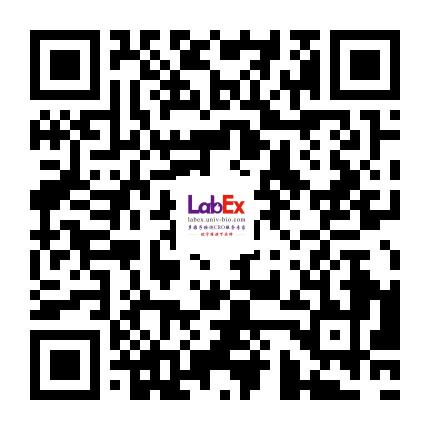Importance: Neurologic symptoms are common in COVID-19, but the central nervous system (CNS) pathogenesis is unclear, and viral RNA is rarely detected in cerebrospinal fluid (CSF).
Objective: To measure viral antigen and inflammatory biomarkers in CSF in relation to neurologic symptoms and disease severity.
Design, setting, and participants: This cross-sectional study was performed from March 1, 2020, to June 30, 2021, in patients 18 years or older who were admitted to Sahlgrenska University Hospital, Gothenburg, Sweden, with COVID-19. All patients had CSF samples taken because of neurologic symptoms or within a study protocol. Healthy volunteer and prepandemic control groups were included.
Exposure: SARS-CoV-2 infection.
Main outcomes and measures: Outcomes included CSF SARS-CoV-2 nucleocapsid antigen (N-Ag) using an ultrasensitive antigen capture immunoassay platform and CSF biomarkers of immune activation (neopterin, β2-microglobulin, and cytokines) and neuronal injury (neurofilament light protein [NfL]).
Results: Forty-four patients (median [IQR] age, 57 [48-69] years; 30 [68%] male; 26 with moderate COVID-19 and 18 with severe COVID-19 based on the World Health Organization Clinical Progression Scale), 10 healthy controls (median [IQR] age, 58 [54-60] years; 5 [50%] male), and 41 patient controls (COVID negative without evidence of CNS infection) (median [IQR] age, 59 [49-70] years; 19 [46%] male) were included in the study. Twenty-one patients were neuroasymptomatic and 23 were neurosymptomatic (21 with encephalopathy). In 31 of 35 patients for whom data were available (89%), CSF N-Ag was detected; viral RNA test results were negative in all. Nucleocapsid antigen was significantly correlated with CSF neopterin (r = 0.38; P = .03) and interferon γ (r = 0.42; P = .01). No differences in CSF N-Ag concentrations were found between patient groups. Patients had markedly increased CSF neopterin, β2-microglobulin, interleukin (IL) 2, IL-6, IL-10, and tumor necrosis factor α compared with controls. Neurosymptomatic patients had significantly higher median (IQR) CSF interferon γ (86 [47-172] vs 21 [17-81] fg/mL; P = .03) and had a significantly higher inflammatory biomarker profile using principal component analysis compared with neuroasymptomatic patients (0.54; 95% CI, 0.03-1.05; P = .04). Age-adjusted median (IQR) CSF NfL concentrations were higher in patients compared with controls (960 [673-1307] vs 618 [489-786] ng/L; P = .002). No differences were seen in any CSF biomarkers in moderate compared with severe disease.
Conclusions and relevance: In this study of Swedish adults with COVID-19 infection and neurologic symptoms, compared with control participants, viral antigen was detectable in CSF and correlated with CNS immune activation. Patients with COVID-19 had signs of neuroaxonal injury, and neurosymptomatic patients had a more marked inflammatory profile that could not be attributed to differences in COVID-19 severity. These results highlight the clinical relevance of neurologic symptoms and suggest that viral components can contribute to CNS immune responses without direct viral invasion.
Viral Antigen and Inflammatory Biomarkers in Cerebrospinal Fluid in Patients With COVID-19 Infection and Neurologic Symptoms Compared With Control Participants Without Infection or Neurologic Symptoms
详见LabEx网站(
www.u-labex.com)或来电咨询!
基因水平:PCR Array、RT-PCR、PCR、单细胞测序
蛋白水平:MSD、Luminex、CBA、Elispot、Antibody Array、ELISA、Sengenics
细胞水平:细胞染色、细胞分选、细胞培养、细胞功能
组织水平:空间多组学、多重荧光免疫组化、免疫组化、免疫荧光
数据分析:流式数据分析、组化数据分析、多因子数据分析
基因水平:PCR Array、RT-PCR、PCR、单细胞测序
蛋白水平:MSD、Luminex、CBA、Elispot、Antibody Array、ELISA、Sengenics
细胞水平:细胞染色、细胞分选、细胞培养、细胞功能
组织水平:空间多组学、多重荧光免疫组化、免疫组化、免疫荧光
数据分析:流式数据分析、组化数据分析、多因子数据分析
联系电话:4001619919
联系邮箱:labex-mkt@u-labex.com
公众平台:多因子及组学服务专家
联系邮箱:labex-mkt@u-labex.com
公众平台:多因子及组学服务专家

本网站销售的所有产品及服务均不得用于人类或动物之临床诊断或治疗,仅可用于工业或者科研等非医疗目的。






 沪公网安备31011502400759号
沪公网安备31011502400759号
 营业执照(三证合一)
营业执照(三证合一)


